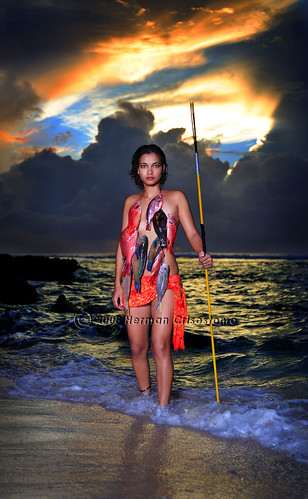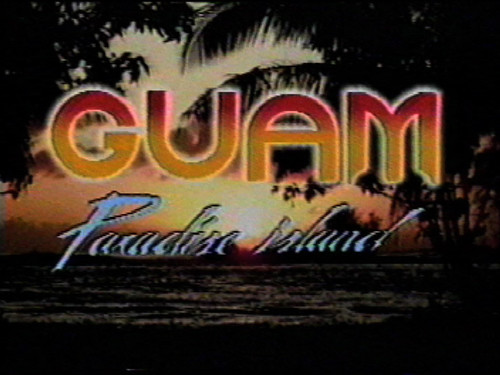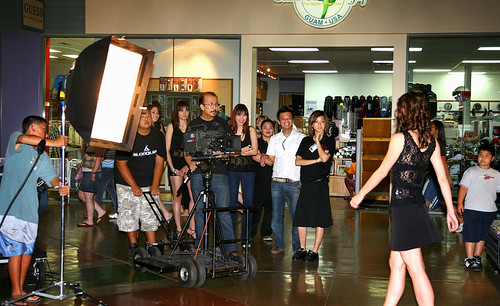Image creator
Herman A. Crisostomo is a photographer and filmmaker known for his stylish television commercials and photographs of beautiful women. Born in Sinajana to Herman Aguon Crisostomo and Marie Rosario Crisostomo, he is one of nine children. Crisostomo owns Pacific Pictures Film & Video, and Pictures, Inc.
Crisostomo began his education at the University of Guam studying art in the 1970s. Frustrated with creating images freestyle, he took a class in commercial art where he had to learn to use a camera. While he had rejected the camera earlier as too complicated, once he understood the device he fell in love with it. After earning a BA in art at UOG, Crisostomo left Guam to attend Brooks Institute of Photography in Santa Barbara, California, in 1977, graduating with a BA and BS in 1980 in Illustrative Photography. Nearly five years later he went to the Art Center, College of Design in Los Angeles to pursue another dream of becoming a filmmaker, and earned an MFA in Film in 1988.
People on Guam know a Herman Crisostomo photograph or television commercial when they see one, as Crisostomo’s work always has a certain sense of style and lighting that is highly recognizable – which Crisostomo explains is a result of a mixture of art and commercialism.
Crisostomo describes his photography as a multilevel form of communication. He creates images that can be viewed as art or as a marketing component. The photographer, Crisostomo says, must imagine or see the image in his own mind and also understand how the camera will translate the message he wants to communicate to his audience. Making that connection is where the creative process comes in.
While people comment most on his exquisite lighting, Crisostomo said that there is much more to creating beautiful images – lighting is just one element. The photographer also has to factor in styling, visual composition, location or set environment and subject appeal. Everything in the photograph is communicating something, including choice of colors or no colors, facial and body expressions and so on.
A picture is built with layers of visual nuances. How a photographer combines and arranges these elements determines the strength of the visual message. Once the photographer has composed all these elements, the picture must also elicit some emotion in the viewer. Without that emotional connection the photo, whether it’s art or commercial, lacks the real power of the photograph.
With the advent of digital technology the final form is often in post production, the editing work that is done in the computer after the shot is taken. In print advertising and television commercials photographers and cinematographers use these layers of communication to invent desire for a particular product, service or concept.
Commercial art is all about controlling the elements. Crisostomo can take the same model and create film noir, a glamour magazine style, or more of an artsy style, depending on what it is meant for, by working with the lighting, styling, and finally, in production. The client works with the photographer to decide whether this image is going to be something that will be hung on a wall in a home or whether it will be a billboard or a TV commercial, and it is up to the photographer to effectively render the image.
Lighting, though, is an important aspect to photography and is controlled by the photographer. The important thing, Crisostomo explained, is to see how you want the photograph to be lighted and then work to make that happen. For example, the light can come in from a window, or it can be reflected off a wall. How the light affects the subject is also important.
Crisostomo loves photographing people. Because of his background in advertising photography his favorite subjects tend to have some particular characteristics and/or beautiful faces. He creates visual concepts which connects people and products, using models and talent mostly as visual attention devices. An advertising photo or a TV commercial must first get the viewers attention before it can sell anything. In the advertising world, the more widely used visual elements are typically beautiful faces and bodies, simply because of their power to create attention whether it’s fashion, glamour or other product association. Other powerful images that people easily respond to are children and animals.
Most of Crisostomo’s work is in advertising with emphasis on fashion and glamour. Because of this he tends to look for certain qualities in his models – lines and proportions that he considers pleasing to the eye. He is interested, though, not just in classic facial beauty but also uniqueness. Not all attractive people are photogenic, Crisostomo notes.
He has learned to distinguish which faces are easier to photograph. There are actual mathematical formulas for determining if a face is photogenic such as measurements, size relations and symmetry within a face. The fuss over this technicality, however, is probably more relevant in modeling agencies or cosmetic surgery clinics. Most photographers rely on their visual instincts and when in doubt will perform test shots to determine a model’s actual photogenic potential. A perfectly proportioned face is one thing but without the model’s personal intrinsic personality, it’s just another face. An image is only as powerful as the emotion it elicits, he says.
As a filmmaker Crisostomo noted that making television commercials is quite similar to commercial photography. The cinematographer is using the same elements of styling, lighting, timing, composition and emotion triggers, and adding two more dimensions – sound and motion. Those two elements, he says, exponentially escalates the power of photographic imagery.
Crisostomo considers TV commercials to be mini films. Unfortunately, many of them can be annoying and invasive especially the commercials that want to deliver their sales pitch like a hammer to the head. These commercials only insult your intelligence and irritate your senses, Crisostomo says, making one glad the remote control was invented. The commercials that people love to hate can actually create a negative impact on the company as well as product it is trying to sell and can be a waste of advertising dollars.
Although there’s a myriad of TV commercial styles, Crisostomo tends to adopt the “Positive Emotion Association” method. He subscribes to the idea of entertaining the audience first and in the process, elicit some positive emotion, and then associate that feeling with the product. When emotion is added to the equation the viewer has better recall and is thus more likely to remember the product. When that recall is colored with positive perception, the audience is also more likely to buy a product.
Besides taking photographs and creating television commercials, Crisostomo made two video specials about Guam: Guam Paradise Island in 1984 (a docudrama) and Discover Guam (a tourism promotional video) in 1994. He was also the video editor for Pattera, a documentary by Karen Cruz, and Sacred Vessels, a documentary by Dr. Vince Diaz. He also was either the producer, director, cinematographer and/or editor for the following: “Tumon Sands Plaza,” “GPO,” “Mega Models of Asia,” “The Magic of Rick Thomas,” “Pacific International Corporation,” and various television commercials.
Crisostomo wrote, directed, photographed and produced most of the Gibson’s (the predecessor of GPO in Tamuning) television commercials from the mid-1980s through the 1990s, as well as its successor, Guam Premier Outlets. Other notable commercials he is associated with are those for Mid Pac’s Miller Lite, Continental Airlines, GPO Fashion, FlipFlops Shop and Miss Guam World.
Video
For further reading
Leon-Guerrero, Jillette. Seeing Guam Through Our Eyes. Agana Heights: Guamology Publishing, 2010.





